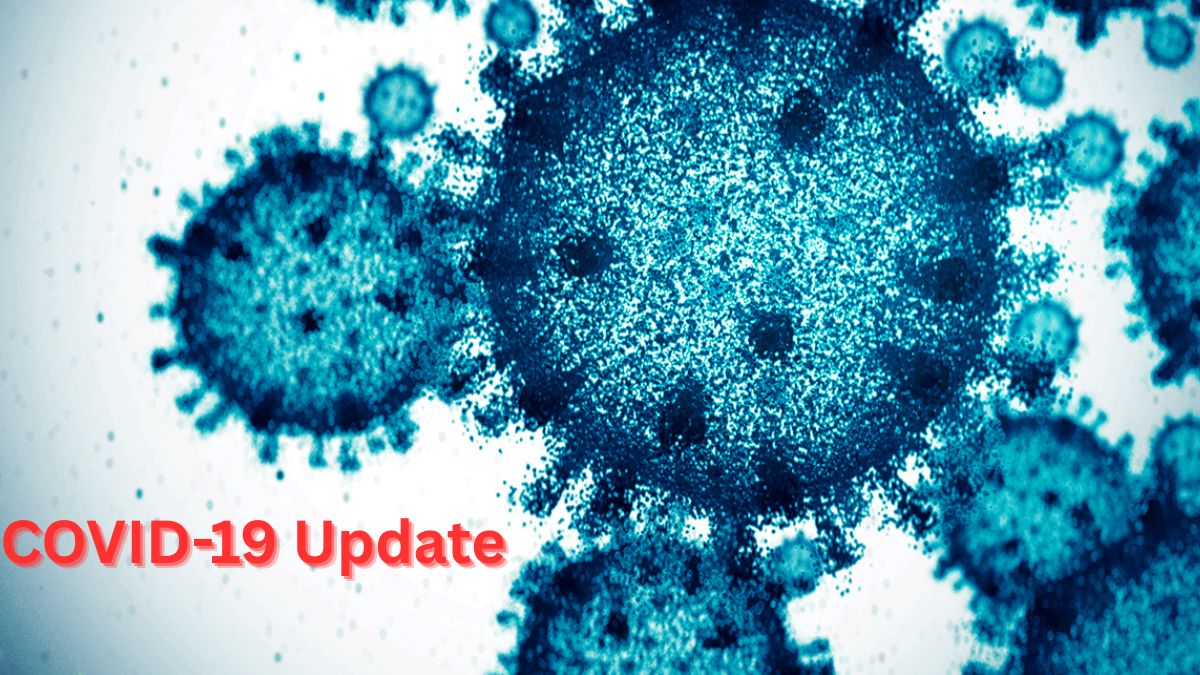BMC Psychology volume 13, Article number: 593 (2025) Cite this article
AbstractSection Background and problem
Women with infertility frequently experience unique psychological challenges. However, the commonly used universal distress scales may not adequately represent their actual psychological state.
AbstractSection Objective
This study focused on the translation and cultural adaptation of Infertility Distress Scale (IDS) to Chinese, and the subsequent evaluation of its validity and reliability.
AbstractSection Methods
Using Brislin translation model, the IDS was translated and culturally adapted for Chinese women. Then, a questionnaire survey was conducted with 592 infertile women using convenient sampling for assessing whether our translated Chinese IDS version was valid and reliable.
AbstractSection Results
This Chinese IDS version included four dimensions involving 23 items. The item-content validity index (I-CVI) was 0.90-1.00, with the Scale-CVI for Universal Agreement (S-CVI/UA) of 0.91. Additionally, the Scale-CVI for Average (S-CVI/Ave) was 0.99 on average. Upon exploratory factor analysis, four common factors were identified, which explained 68.08% of variance. Moreover, a good fit was obtained by confirmatory factor analysis. In addition, the correlation coefficient between the subjective experience dimension and the Kessler 10 Psychological Distress Scale was 0.64, and the correlation coefficient between the Infertility Distress Scale and the Fertility Problem Inventory was 0.68. The overall scale reliability (Cronbach’s α) was 0.95.
AbstractSection Conclusion
While the validated Chinese IDS offers significant insights into infertility-related distress, its applicability should consider demographic variances and the contextual limitations of the study, advocating for caution in generalizing findings across broader populations.
Infertility refers to the inability to conceive after at least one year of regular, following unprotected sexual intercourse [1]. Globally, infertility affects 10-15% of couples, with a prevalence rate of approximately 15% in China [2, 3].This high prevalence underscores the significant public health challenge posed by infertility. In traditional Chinese culture, infertile women face unique societal and psychological challenges compared to individuals with other chronic conditions. These challenges often lead to a profound impact on their quality of life [4], physical and mental health [5], and marital satisfaction [6].Consequently, infertility has become not only a medical issue but also a social concern requiring urgent attention.
Psychological distress, often referred to as the sixth vital sign alongside body temperature, respiration, blood pressure, pulse, and pain [7], encompasses negative emotional responses arising from various social, spiritual, and psychological factors [8]. Previous studies have indicated that infertile women experience psychological distress at levels comparable to or exceeding those associated with other chronic diseases, including symptoms of depression and anxiety [9]. Moreover, infertility-related distress is uniquely compounded by intense fertility concerns [10], challenges to identity and self-worth [11], marital strain [12], societal pressures, and uncertainty surrounding treatment outcomes [13]. These factors collectively distinguish the psychological distress of infertile women from that experienced by individuals with other conditions.
Despite its significance, existing tools such as the Kessler Psychological Distress Scale [14] and the Distress Thermometer [15] lack the specificity needed to accurately capture the unique characteristics of infertility-related psychological distress. To address this gap, we conducted semi-structured interviews to explore the lived experiences of infertile women in China, incorporating family and cultural factors into our analysis. These interviews revealed that infertile women experience profound feelings of sadness, helplessness, and loss at the psychological level, often accompanied by doubts about their physical capabilities and self-worth. At the social level, infertility challenges their societal roles, while within marriages, it can lead to communication barriers and emotional strain. Additionally, the uncertainty and length of infertility treatment exacerbate their psychological burden, affecting their happiness, future expectations, and overall well-being.
Existing questionnaires such as the Fertility Problem Inventory [16], the Copenhagen Multi-centre Psychosocial Infertility (COMPI) Research Programme scales [17], and the Fertility Quality of Life Questionnaire (FertiQoL) [18], although translated to Mandarin [19, 20], may not be applicable to the Chinese cultural context for the following reasons: being developed for women with infertility in a Western cultural context, samples mainly coming from infertility patients seeking treatment, thus not representing those who have never sought medical help; lack of specificity for Assisted Reproductive Technology (ART) circumstances, and a potentially tedious length. Recognizing these limitations in existing tools, the Infertility Distress Scale (IDS) was developed as specialized self-report instrument to assess the psychological distress of infertile women. This study introduces the IDS, aiming to provide healthcare professionals with a reliable and valid tool for identifying and addressing the unique psychological needs of this population, ultimately improving their care and support.
The present cross-sectional survey was conducted in three sampling rounds. In the first sampling, a purposive sampling method was used to select patients with infertility from the Reproductive Medicine Department of a tertiary hospital in Daqing City between July and September 2022 as the interview subjects. The second sampling was performed in October 2022, and 30 patients with infertility were conveniently drawn as the pre-test subjects for a pilot survey. The third sampling was carried out from October 2022 to April 2023, in which convenience sampling was used for investigating infertile patients in Outpatient and Inpatient Departments of three tertiary hospitals in Daqing and Harbin cities. The patient inclusion criteria were as follows: (1) those meeting the WHO diagnostic criteria for infertility (namely, women of reproductive age who have been trying to conceive without using contraception and have regular sexual activity for one year without success) [21]; (2) those with education level of primary school or above; (3) patients without cognitive or communication disorders, being capable of effectively communicating with researchers and understanding the content of the survey; and (4) patients willing to take part in the present work and providing the informed consent. Patients below were excluded: (1) those developing other concurrent serious physical or psychological diseases; and (2) those who withdrew in the middle of the survey. The principle of voluntary participation was emphasized, and women were allowed to withdraw from this work at any time without providing a reason. Women were also assured of confidentiality of survey results. The Ethics Committee of the Harbin Medical University, Daqing Campus approved the present work (received permission on March 23, 2024, Clinical Trial Number: HMUDQ20240323001). Following the principle of a sample size 5–10 times the item number in the scale [22], 292 responses were used for exploratory factor analysis (EFA) in this study. In line with the principle of having no fewer than 200 responses for confirmatory factor analysis [23], 300 data points were utilized for this purpose.
Infertile women participated in this study by completing a questionnaire, which provided vital information for the research data.
This scale was designed by Aygül Akyüz et al. [24] in 2008 to assess the self-reported distress resulting from infertility as well as its treatment processes among women. Originally developed in Turkish, the scale was translated into English by the original authors’ team following the principles of cross-cultural adaptation for research instruments. The scale involves 21 items. Meanwhile, the Likert 4-point rating scale is employed, where “never feel” is scored 1, and “always feel” is scored 4. Items 3, 10, 13, 14, and 21 are scored adversely, with the greater total scale score indicating the greater psychological distress level.
The Cronbach’s α coefficient of its original scale is 0.93, reliability values that exceed 0.7 are considered acceptable demonstrating high reliability [25]. EFA was done of the scale, The Kaiser- Meyer-Olkin (KMO) test result has been 0.92. The significance level of Bartlett’s Test of Sphericity has been significant (p < 0.001).
After being authorized by authors of the original scale, the scale was translated strictly following the Brislin’s translation model [26]. Specifically, the translation was conducted below: (1) Translation and back-translation: two translators proficient in English and native speakers of Chinese translated the original scale in two Chinese versions independently, referred to as A1 and A2. Afterwards, a third translator with bilingual background then compared the translations of two versions with the original scale. A consensus could be reached after discussion within the translation team for forming a Chinese version referred to as A3. The research team then compared versions A1 to A3 with the original scale to select the most appropriate expressions, thus forming a preliminary translation version named A. Subsequently, two bilingual scholars who were unfamiliar with the original scale were invited to independently back-translate A. This process yielded two back-translation versions. Finally, after discussion with the research group, the back-translation version B was formed. Afterwards, the research team sent B to the original authors for review and made modifications according to their suggestions. (2) Cross-cultural adaptation: Ten experts were invited for cultural adaptation, including three experts in infertility nursing, one professor of psychological nursing, one statistics expert, four reproductive doctors, and one English language expert. They examined all the translated and back-translated versions, as well as the instructions of the original scale, so as to assess the relevance of scale items and ensure the content equivalence. To better adapt the introduced IDS to the Chinese cultural context, semi-structured interviews were conducted among 10 infertile women who demonstrated high compliance and met the inclusion criteria. The interview results were thematically analyzed by the Colaizzi phenomenological seven-step method [27]. The refined themes were later validated by returning them to the interviewees. Based on the interview findings, the scale items were modified and improved. The specific modifications were shown below: three items were added (including Item 4: “I feel a lot of pressure because of my family’s excessive concern,” Item 24: “I feel confused, frustrated, and out of control during the diagnosis and treatment process,” and Item 25: “The lack of disease and treatment-related knowledge makes me feel strongly uncertain”). Besides, the item “I feel rejected by family and friends” was split into two separate items, namely, Item 2 “I feel rejected by family” and Item 3 “I feel rejected by friends”. (3) Integration: The researchers consolidated the modification suggestions from experts and the revision recommendations from the original scale’s authors to form a pre-experimental version, C. (4) Pre-investigation: Thirty infertile women were randomly selected for on-site surveys, during which, they were asked about their feelings and understanding of the scale items while completing the questionnaire. Based on the survey findings, the IDS Chinese version was formulated.
The Kessler 10 Psychological Distress Scale consists of 10 items, and is therefore also known as the K10. The K10 is used to survey mental health status in general population and serves as the widely applicable scale for measuring psychological distress levels. The scale involving 10 items. Meanwhile, the Likert 5-point rating scale is employed, where " almost never " is scored 1, and " all of the time " is scored 5, To be specific, 10–15, 16–21, 22–29 and ≥ 30 points represent almost no distress, mild, moderate, and severe distress, respectively [14]. Research has shown that the K10 demonstrates good reliability, Notably, the Cronbach’s α coefficient in the present work was 0.94.
This scale, originally developed by Canadian scholar Newton CR in 1999, is specifically designed to assess the fertility-related stress in individuals with infertility [16]. In 2011, Peng et al. translated and adapted the scale into Chinese [19]. The scale comprises 46 items, evaluating fertility stress across five dimensions: social pressure, sexual pressure, spousal relationship, parental role expectations, and the stress of childlessness. It utilizes a 6-point Likert scoring system, where “1” indicates “completely disagree” and “6” indicates “completely agree”. A higher total score on this scale indicates a higher level of fertility stress. The Cronbach’s α coefficient in the present work was 0.98.
For item analysis, we sorted the IDS Chinese version scores from high to low. Following established psychometric principles [28], we adopted the 27% criterion as the optimal cut-off point, which theoretically maximizes the discrimination between extreme groups in normally distributed samples. Accordingly, the top 27% of participants were classified as the high-score group, whereas the bottom 27% as the low-score group. This approach is consistent with contemporary psychometric practice as exemplified by Wang et al. [29]. Scores between the two groups were compared by independent sample t-tests. The relation of every item score with total scale score was analyzed by Pearson correlation analysis. The internal consistency coefficient was employed as a measure of homogeneity to observe whether the reliability of the scale, after the alteration of the number of items, is higher than that of the original scale.
Pre-investigation stage was conducted with 30 infertility women. The item-content validity index (I-CVI) and the Scale-Level Content Validity Index (S-CVI) and S-CVI/Universal Agreement (S-CVI/UA) were calculated using data from the second round of expert consultation. EFA and confirmatory factor analysis (CFA) were used to validate the construct validity of the scale. For the EFA, orthogonal rotation with Varimax and principal component analysis were employed for extracting factors whose eigenvalues were > 1, as well as items whose factor loadings exceeded 0.4. CFA was conducted to assess the model’s fit using various indices, including the ratio of chi-square/degrees of freedom (χ²/df), the Adjusted Goodness-of-Fit Index (GFI), the Adjusted Goodness-of-Fit Index (AGFI), the Normed Fit Index (NFI), the Tucker-Lewis Index (TLI), the Comparative Fit Index (CFI), and the root mean square error of approximation (RMSEA). Following the recommended guidelines, we considered acceptable model fit if χ²/df < 3, GFI > 0.9, AGFI > 0.8, NFI > 0.9, TLI > 0.9, CFI > 0.9, and RMSEA < 0.08 [30]. In this study, using the Kessler 10 Psychological Distress Scale [14] and the Fertility Problem Inventory as criterion.
Cronbach’s α coefficient was used to evaluate the reliability of the scale, with a value greater than 0.7 being considered acceptable [31].
Amos 23.0 and SPSS 22.0 software were employed for data statistical analysis. Basic information characteristics were expressed as descriptive data, like percentages and frequencies. Items were analyzed by critical ratio, item-total correlation analysis, and homogeneity test. Validity testing included face, content, structure, and criterion validity. Lastly, the scale reliability was assessed by employing Cronbach’s α coefficients. The significance level was set at p < 0.05.
Altogether survey questionnaires were performed in 640 infertile women meeting our inclusion criteria, with 592 valid questionnaires being obtained, and the effective response rate was 93%. Table 1 displays basic characteristics.
With the exception for items 10 and 12, Critical Ratio values for those rest 23 items were all of statistical significance (p < 0.001), indicating good discriminative ability. Correlation coefficients of every item score with total scale score were 0.59–0.74, showing statistical significance (p < 0.001). Homogeneity test was also conducted, after removing items 10 and 12, comparisons of scores between low and high groups for those remaining 23 items revealed statistically significant differences (p < 0.001). Additionally, the scale total Cronbach’s α coefficients slightly increased. Therefore, the decision was made to retain all the 23 items.
During the pre-investigation stage, all the 30 infertile women expressed that the content was easy to understand. They reported no uncertainties while completing the questionnaire, and it took approximately 5 min to finish the questionnaire. Based on the above results, the scale item and option design was reasonable and the readability was high.
I-CVI was 0.90-1.00, S-CVI/UA was 0.91, while S-CVI/Ave was 0.99, demonstrating high scale content validity. According to our results, KMO measure was 0.96, meanwhile, Bartlett’s test of sphericity (χ2 = 4367.09, p < 0.001) indicated the suitability of factor analysis [32]. Upon analysis, 4 common factors were yielded, accounting for 68.08% of overall variance. Communalities of all items were 0.585–0.762. More details are provided in Table 2. Factor naming should follow the loadings of the reference items, which were typically named based on the implied meaning of items with higher loadings. They were named as follows: Social Distress (items 1, 2, 3, 4, 5, 13, 14, 16, 17), Marital Distress (items 15, 18, 19, 20, 21, 22, 23), Subjective Experience (items 6, 7, 9, 11), and Treatment Distress (items 8, 24, 25). Upon confirmatory factor analysis, the χ²/df = 1.40, GFI = 0.92, AGFI = 0.90 CFI = 0.98, RMSEA = 0.04, NFI = 0.92, and TLI = 0.97. These results revealed the good overall model fit. Table 3; Fig. 1 display more details. The correlation coefficient between the subjective experience dimension in the Infertility Distress Scale and the Kessler 10 Psychological Distress Scale was found to be 0.64 (p < 0.001), and the correlation coefficient between the Infertility Distress Scale and the Fertility Problem Inventory was 0.68 (p < 0.001).
Notably, the Cronbach’s α coefficients of the IDS Chinese version was 0.95, indicating the high scale internal consistency. Specifically, the Cronbach’s α for the Social Distress dimension is 0.93, for the Marital Distress dimension is 0.92, for the Subjective Experience dimension is 0.86, and for the Treatment Distress dimension is 0.83. These coefficients suggest that the scale is reliable across its various dimensions.
Infertility represents a significant psychological challenge, particularly within the complex sociocultural context of China. Despite growing recognition of psychological distress among infertile women, existing assessment tools predominantly developed in Western populations lack cultural sensitivity and contextual specificity. Our study addressed this critical gap by developing and validating a culturally adapted IDS specifically designed for Chinese women.
The research unveiled a robust four-dimensional structure of psychological distress, comprising social distress, marital distress, subjective experience, and treatment distress. This novel framework differs significantly from previous Western-developed scales, highlighting the importance of cultural nuance in psychological measurement. The exploratory factor analysis explained 68.08% of total variance, demonstrating the scale’s strong explanatory power and construct validity. Psychometrically, the scale exhibits excellent reliability, with an overall Cronbach’s α of 0.95 and dimension-specific reliabilities ranging from 0.83 to 0.93, exceeding standard psychometric thresholds.
The study’s primary innovation lies in its rigorous cross-cultural adaptation methodology. By employing Brislin’s comprehensive model [26] and conducting in-depth semi-structured interviews, we integrated three culturally specific items that capture the unique psychological experiences of Chinese women facing infertility. This approach addresses a limitation in existing psychological assessment tools, which often fail to account for cultural variations in psychological experiences and emotional expression.
Comparative analysis with previous research by Akyüz et al. [24]. and Arab-Sheybani et al. [33] reveals both methodological consistency and crucial cultural adaptations. The Chinese IDS not only provides a comprehensive assessment of infertility-related psychological distress but also offers insights into the intricate interplay between social, marital, and personal dimensions of infertility experiences within the Chinese cultural context.
Practical implications are substantial. Healthcare professionals can now utilize this scale to: (1) identify specific areas of psychological distress, (2) develop targeted psychological interventions, and (3) monitor mental health outcomes for infertile women more effectively. The scale’s cultural sensitivity enables a more nuanced understanding of psychological challenges associated with infertility in the Chinese population.
Despite its strengths, the study has limitations: (1) The study primarily recruited participants from urban areas, which may not accurately reflect the experiences and psychological distress faced by infertile women in rural regions of China. This limitation could affect the generalizability of our findings to a broader population. (2) The cross-sectional nature of this research limits our ability to draw causal inferences or assess changes in distress levels over time. Longitudinal studies would be beneficial to evaluate the stability and predictive validity of the Chinese IDS across different stages of the infertility journey. (3) Although key covariates were controlled, unmeasured confounding factors such as partner relational dynamics and culturally-mediated stigma patterns warrant consideration. (4) The use of self-reported questionnaires may introduce response bias, as participants might underreport or overreport their feelings due to social desirability or personal stigma associated with infertility. Future research should aim to address these gaps and validate the IDS in more diverse populations to enhance its applicability.
The Chinese version of the Infertility Distress Scale has demonstrated acceptable psychometric properties in initial validation studies, showing potential as an assessment tool for psychological distress among infertile women in specific Chinese clinical populations. Its multidimensional structure provides a differentiated perspective for evaluating distress components, though further psychometric evaluation is needed to confirm its generalizability. While the scale may offer healthcare professionals supplementary information for understanding distress patterns, clinical application should be combined with comprehensive psychosocial assessments. The current evidence supports its preliminary use for screening purposes, with recommendations for longitudinal tracking to establish predictive validity. Future validation should prioritize cross-cultural adaptation studies and population-specific norm establishment, particularly addressing regional socioeconomic disparities and evolving assisted reproductive technology contexts in China.
The data sets generated and analyzed in the current research are not accessible to the public. This is due to the fact that individuals in China tend to be more private about their personal lives and inner thoughts. However, before conducting the survey, informed consent was secured from all participants, and while the study’s findings have been extensively reported, the data can be accessed upon reasonable request to the corresponding author. It is important to note that informed consent was obtained from every participant (or their representatives or legal guardians) to be part of the study. Furthermore, each patient included in the research signed an informed consent form.
- AGFI:
-
Adjusted Goodness-of-Fit Index
- ART:
-
Assisted Reproductive Technology
- CFA:
-
Confirmatory factor analysis
- CFI:
-
Comparative Fit Index
- COMPI:
-
Copenhagen Multi-centre Psychosocial Infertility
- EFA:
-
Exploratory factor analysis
- FertiQoL:
-
Fertility Quality of Life Questionnaire
- GFI:
-
Goodness-of-Fit Index
- I-CVI:
-
Item-content validity index
- IDS:
-
Infertility Distress Scale
- K10:
-
Kessler 10 Psychological Distress Scale
- KMO:
-
Kaiser-Meyer-Olkin
- NFI:
-
Normed Fit Index
- RMSEA:
-
Root mean square error of approximation
- S-CVI:
-
Scale-content validity index
- TLI:
-
Tucker-Lewis Index
- WHO:
-
World Health Organization
- χ2/df:
-
Chi-square/degrees of freedom
The authors would like to thank all hospitals for allowing data collection and all participants for their input. The authors would like to thank Professor Wu and Zheng for witnessing the completion of the manuscript and making significant contributions as the corresponding author.
This work was supported by the [Research Project of the Health Commission of Heilongjiang Province] under Grant [number 20230505020109]; [Research Project of the Fifth Affiliated Hospital of Harbin Medical University] under Grant [number 2023-008].
Informed consent to participate in this study was obtained from all study participants. The study was reviewed and approved by the Ethics Committee of the Harbin Medical University, Daqing Campus (received permission on March 23, 2024, Clinical Trial Number: HMUDQ20240323001). The study was performed in accordance with relevant guidelines and regulations (especially Declaration of Helsinki).
Not Applicable.
The authors declare no competing interests.
Springer Nature remains neutral with regard to jurisdictional claims in published maps and institutional affiliations.
Open Access This article is licensed under a Creative Commons Attribution-NonCommercial-NoDerivatives 4.0 International License, which permits any non-commercial use, sharing, distribution and reproduction in any medium or format, as long as you give appropriate credit to the original author(s) and the source, provide a link to the Creative Commons licence, and indicate if you modified the licensed material. You do not have permission under this licence to share adapted material derived from this article or parts of it. The images or other third party material in this article are included in the article’s Creative Commons licence, unless indicated otherwise in a credit line to the material. If material is not included in the article’s Creative Commons licence and your intended use is not permitted by statutory regulation or exceeds the permitted use, you will need to obtain permission directly from the copyright holder. To view a copy of this licence, visit http://creativecommons.org/licenses/by-nc-nd/4.0/.
Liu, S., Zhang, P., Tian, X. et al. The adaptation of the infertility distress scale into Chinese: cross-cultural adaptation, reliability and validity. BMC Psychol 13, 593 (2025). https://doi.org/10.1186/s40359-025-02948-x
Received:
Accepted:
Published:
DOI: https://doi.org/10.1186/s40359-025-02948-x













